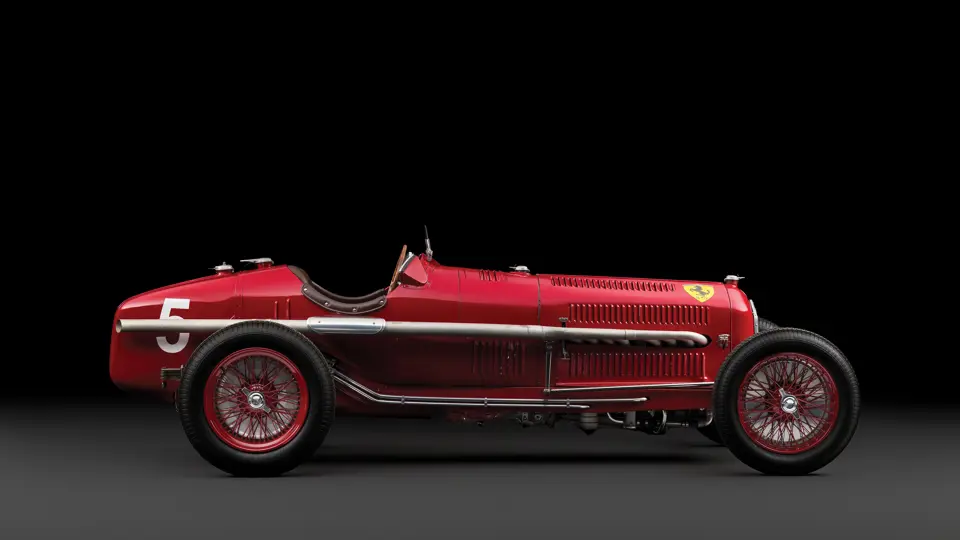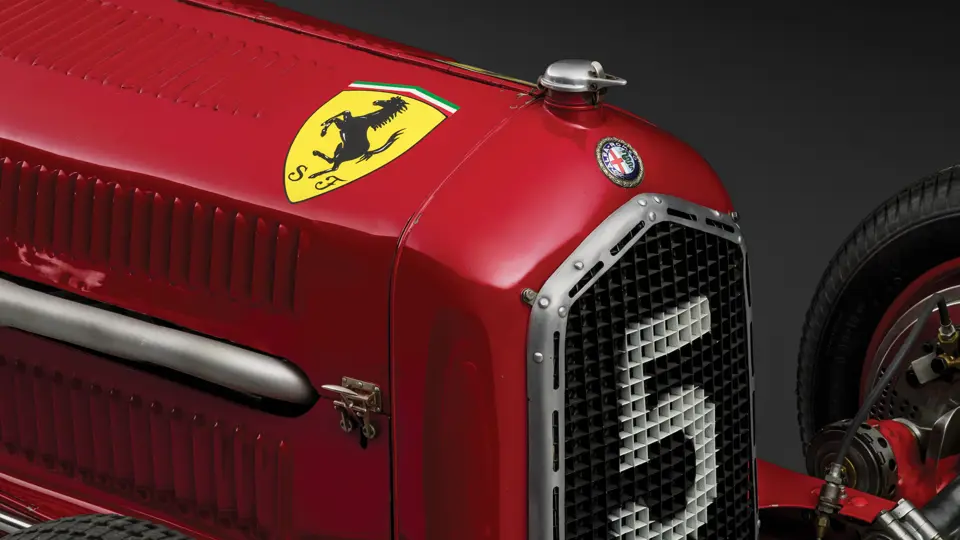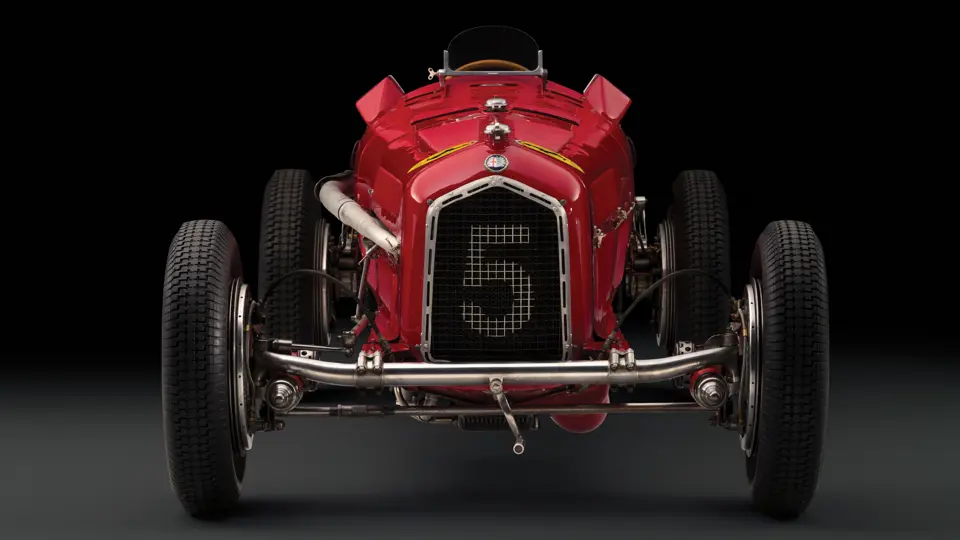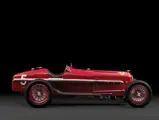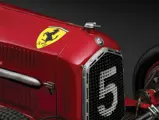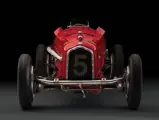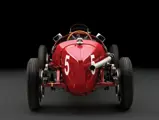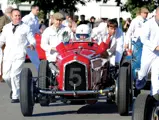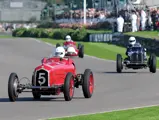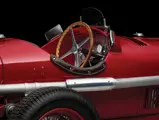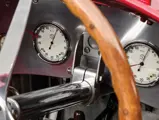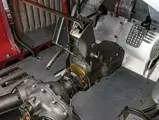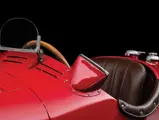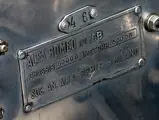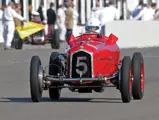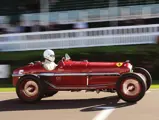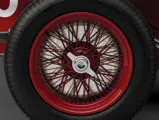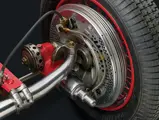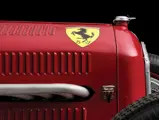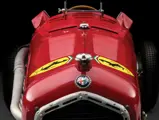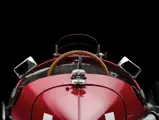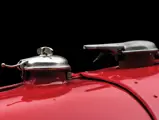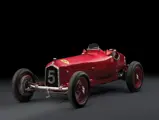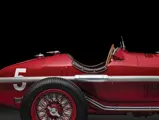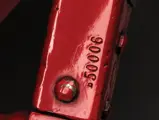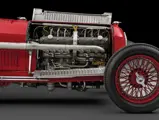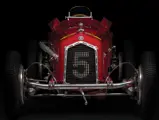
1934 Alfa Romeo Tipo B P3
{{lr.item.text}}
€3,920,000 EUR | Sold
{{bidding.lot.reserveStatusFormatted}}
- The 6th of 7 second-series wide-body examples
- One of three examples originally fitted with Dubonnet independent front suspension and reversed quarter-elliptical leaf springs
- Campaigned by Scuderia Ferrari during the 1934 and 1935 Grand Prix seasons
- Driven by racing luminaries including Tazio Nuvolari and Rene Dreyfus
- Well-documented ownership history; extremely authentic example
- Sensational example of the first monoposto Grand Prix model
- One of Alfa Romeo’s most important pre-war race cars
- Sixième de sept exemplaires de deuxième série à carrosserie large
- Un des trois exemplaires équipés à l'origine d'une suspension avant Dubonnet indépendante et de ressorts arrière quart-elliptiques inversés
- Engagée en course par la Scuderia Ferrari pour les saisons de Grand Prix 1934 et 1935
- Pilotée par des champions Tazio Nuvolari et Rene Dreyfus
- Historique de propriété bien documenté ; exemplaire extrêmement authentique
- Sensationnel exemplaire du premier modèle monoposto de Grand Prix
- Une des plus importantes Alfa Romeo de course d'avant-guerre
Veuillez noter que, contrairement à ce qui est indiqué dans le catalogue papier, l'Alfa Romeo P3 Tipo B n'était pas la première monoplace de Grand Prix, et qu'il y a eu six Tipo B produites aux spécifications 1932.
255 bhp 2,905 cc DOHC supercharged inline eight-cylinder engine, three-speed manual transmission, front Dubonnet independent suspension, rear live-axle suspension with reversed quarter-elliptical leaf springs, and four-wheel mechanical drum brakes. Wheelbase: 2,642 mm
Moteur huit-cylindres en ligne, 2 905 cm3, 255 ch, 2 ACT, transmission manuelle trois rapports, suspension avant indépendante Dubonnet, essieu arrière rigide avec ressorts quart-elliptiques inversés, freins à tambour à commande mécanique sur les quatre roues. Empattement 2 642 mm.
THE ALFA ROMEO MONOPOSTO
In late 1931, Alfa Romeo engineer Vittorio Jano began designing a new Grand Prix car to compete with the latest models from Bugatti and Maserati. While a 2.6-litre version of Alfa’s successful inline eight-cylinder was chosen as a powerplant, Jano sought a more purpose-built chassis and body than the sports car-style Monza spiders.
Using the two-seat P2 Grand Prix car as a foundation, Jano engineered an extremely light chassis, which he mounted with new centreline slipper-style single-seat coachwork that placed the driver at the car’s exact centre, for ideal weight distribution. The resulting Tipo B, or P3, was noteworthy, as it was the first Grand Prix car to feature monoposto coachwork configuration.
Weighing just 701 kilograms, the Tipo B was immediately successful during the 1932 season, as the legendary Tazio Nuvolari won the Monza Grand Prix, and team cars took 1-2-3 finishes at the French and German Grand Prix. Six initial Tipo B examples were built with the original 1932 specifications.
After the Great Depression forced Alfa Romeo into government receivership in 1933, the manufacturer was financially prohibited from racing expenditures and formally withdrew from competition. Management took exception, however, when the Maserati brothers’ newer monoposto car beat an older 8C Monza being run by the Scuderia Ferrari, and consequently decided to entrust the newest factory cars to its unofficial team. The Scuderia Ferrari took full advantage of the Tipo B, using it to win the Coppa Acerbo and the Italian and Spanish Grand Prix.
In 1934, formula rules changed to demand wider and heavier cars, and Alfa complied by widening the bodywork on the original five P3 cars. A batch of seven additional examples was then built to the newer specifications, and these cars received larger 2.9-litre engines. Numbering sequentially from chassis number 50001, these wide-body cars were often identified by their Scuderia Ferrari number.
The new cars continued to perform admirably, winning in Monaco, Alessandria, Tripoli, and Casablanca, as well as the Targa Florio. By mid-1934, however, the competition had caught up and the Tipo B’s dominance began to wane, though Louis Chiron and Achille Varzi contributed to a 1-2-3 finish at the French Grand Prix, while Varzi won the event at Nice later that year.
During the off-season, Enzo Ferrari enticed Nuvolari to return to the Scuderia, and the Tipo B cars were further modified with the introduction of Dubonnet-style independent front suspension and reversed quarter-elliptical leaf springs at the rear (which Nuvolari had pioneered to great effect with the Bugatti Type 59). In this configuration, Nuvolari won the 1935 Pau and German Grand Prix, while Carlo Pintacuda won the Mille Miglia, and Chiron and Brivio finished 1-2 at the Targa Florio. Numerous other wins followed at minor events like at Bergamo, Biella, Turin, and Dieppe.
SCUDERIA FERRARI NUMBER 46
Chassis number 50006 is the sixth example of the seven second-series wide-body cars, and one of three originally fitted with the Dubonnet suspension and reversed quarter-elliptical leaf springs (as opposed to being converted by the factory following initial manufacture). Stamped with Scuderia Ferrari number 46, this car interchangeably participated in the campaigns of 1935 with the other Tipo B cars. Individual chassis records were not recorded by the factory or the Scuderia, so it is nearly impossible to determine with any certainty which chassis was used in any given race. It is nevertheless strongly believed that this car was piloted and tested by vaunted drivers like Nuvolari and Varzi. However, it can be proven that this car was indeed campaigned at the 1935 Masyrk Grand Prix in Brno, Czechoslovakia, with Antonio Brivio, placing 4th overall. For the 1935 season, the Tipo B proved to be a highly competitive car and accrued a number of overall victories that year, including at the Targa Florio and Nuvolari’s highly celebrated victory at the German Grand Prix at the Nürburgring
In late 1936, the Scuderia Ferrari sold this P3 to Frank Ashby, an English engineer who ran the car at the Brighton Speed Trials in October. He continued to campaign it in hill climbs and other events over the next two years at venues like Brooklands. When the original engine began to crack, Ashby built and installed a new cylinder head and undertook modifications to the radiator and exhaust. His local racing exploits were covered by the British motoring press in magazines like Motor Sport and The Light Car. Ashby later emigrated to Sydney, Australia, where he reportedly befriended a young Jack Brabham and recommended engineering modifications that helped propel the talented driver to his successful multi-championship career.
The Tipo B was sold in 1946 to Ken Hutchison, a wealthy British enthusiast who wrote about his experiences with the car in an extended cover feature in the January 1948 issue of Motor Sport magazine. The Alfa’s road manners were also described in a 1947 issue of The Motor as being ‘marvellous, even, and tight . . . the whole car seemed absolutely perfectly balanced.’
The car continued to see racing use through 1950, sold to enthusiast Joe Goodhew in the winter of 1949. In 1953, he sold the car to John McMillan of New Zealand, who immediately campaigned it in the New Zealand GP in January 1954. The Tipo B saw additional time on the local circuit through the ownerships of Ernie Sprague and Bill Harris of Christchurch. Leon Witte of Lyttleton then purchased the car and undertook restoration of the bodywork.
Prior to 50006 making its way to New Zealand, modifications to the bodywork were carried out to an otherwise extremely original 50006. During 50006’s life in England, a narrow body had been constructed and fitted. Leon Witte decided that the car should be put back to its original wider cockpit as campaigned by Scuderia Ferrari. At the time of restoration, Bill Clark owned 50005, and an exact copy of the original wide cockpit used during the Scuderia Ferrari era was crafted using 50005 as a guide. According to the noted Alfa Romeo historian Simon Moore’s Magnificent Monopostos text, it is believed that ‘only the centre section of the body had to be replaced, the rest being original’. Further evidence of this is noted in a photograph of both Leon Witte and Bill Clark with 50006 and 50005, respectively, with only the centre section appearing new. This is further confirmed by an inspection report on file. The Alfa was purchased around 1990 by one of Japan’s foremost collectors, Yoshiyuki Hayashi.
In 2000, chassis number 50006 was purchased by noted American collector Bruce McCaw, who retained the car until 2007. At that time, the Tipo B was purchased by Umberto Rossi, and he commissioned an inspection and report from both the esteemed Hall & Hall in Lincolnshire, England, and one of the most pedigreed British motor racing authors and experts (who had previously inspected the car during Hayashi’s ownership).
Today, thanks to a remarkable unbroken chain of documented ownership, chassis 50006 is confirmed to retain almost all factory-original components. It is truly remarkable that in the car’s 80-plus year history, it was never derelict nor neglected like so many other cars. It has remained intact all its life and was never rebuilt from an assemblage of parts or discarded for years on end. In addition to its original chassis, the very precious 3.2L SF-50-A motor from the famous Bimotore car is included with the sale.
The crankcases of 50005 and 50006, as well as the one from the Alfa Aitken, were interchanged when all three cars were in New Zealand. Bill Clark acquired all of these engine parts when he bought 50005. Eventually, SF-50-A was paired with 50006. Taking into account the historical importance of SF-50-A, the decision was made to construct a totally authentic modern engine for racing and to put SF-50-A on a stand in an effort to preserve it. The new engine parts were supplied through the Jim Stokes Group and then assembled and tuned by Hall & Hall.
With the exception to the aforementioned restored cockpit section of the bodywork, the bonnet panels are largely original. Stampings throughout the car appear to be entirely genuine upon examination. Of course, all of these cars were raced in period and parts were exchanged and replaced as necessary to keep them competitive. Thus, finding a wholly original P3 is next to impossible. Importantly, documentation on file asserts that chassis number 50006 ‘incorporates many original components from the Scuderia Ferrari/Alfa Romeo stock of the 1934–1935 period’. Finally, documentation on file further attests and confirms chassis number 50006 benefits from ‘a substantially unbroken provenance line extending from the Scuderia Ferrari to the present owner’, confirming its authenticity as a true Scuderia Ferrari-campaigned P3 and therefore, a true piece of motorsport history. The car is further documented by an FIA Heritage Certificate, issued in 2007.
In conclusion, this rare and extremely authentic Tipo B offers discerning collectors an opportunity to acquire an important intersection of the history of Alfa Romeo and the Scuderia Ferrari, as well as one of the earliest monoposto Grand Prix cars ever built. Driven by some of racing’s most celebrated drivers, including the Flying Mantuan himself, this important pioneering Tipo B would crown any collection and should expect a warm welcome at exclusive events such as Villa d’Este and Pebble Beach. Many would argue that perhaps the best place for chassis number 50006 to be enjoyed would be on the track, where it would undoubtedly be a thrill to not only the driver, but to all in attendance, just as Enzo Ferrari, Tazio Nuvolari, and Achille Varzi would have wanted.
L'ALFA ROMEO MONOPOSTO
A la fin de 1931, l'ingénieur Alfa Romeo Vittorio Jano dessinait une nouvelle voiture de Grand Prix pour lutter contre les derniers modèles de Bugatti et Maserati. Alors qu'une version 2,6 litres de l'excellent huit-cylindres en ligne était retenu, Jano étudiait un châssis et une carrosserie conçus plus spécifiquement pour les Grand Prix que les spiders Monza de sport.
Partant de la P2 de Grand Prix, Jano mettait au point un châssis extrêmement léger, sur lequel il installait une carrosserie monoplace effilée dans laquelle le pilote était situé exactement au centre, pour une distribution des poids idéale. La Tipo B, ou P3, qui en résultait était une voiture remarquable car c'était la première machine de Grand Prix à présenter une configuration de carrosserie "monoposto" (monoplace).
Avec un poids de 701 kg, la Tipo B remportait un succès immédiat dès la saison 1932, le légendaire Tazio Nuvolari remportant le Grand Prix de Monza et les voitures de l'équipe signant les trois premières places aux Grand Prix de France et d'Allemagne. Six premiers exemplaires de Tipo B voyaient le jour aux spécifications 1932.
Après que la Grande Dépression ait obligé Alfa Romeo à être placé en 1933 sous administration judiciaire, le constructeur n'était plus autorisé à effectuer des dépenses dans le domaine de la course automobile et se retirait officiellement de la compétition. Mais une exception était consentie après la victoire de la nouvelle monoplace des frères Maserati sur une 8C Monza vieillissante, gérée par la Scuderia Ferrari. La direction d'Alfa Romeo décidait alors de confier les dernières voitures d'usine à l'écurie non officielle, et la Scuderia Ferrari tirait le meilleur parti de la Tipo B, l'amenant à la victoire à la Coppa Acerbo et aux Grand Prix d'Italie et d'Espagne.
En 1934, la règlementation changeait et exigeait des voitures plus larges et plus lourdes. Alfa s'y conformait en élargissant la carrosserie des cinq premières P3. Une série de sept exemplaires supplémentaires était alors produite aux nouvelles spécifications, et ces voitures recevaient un plus gros moteur 2,9 litres. Les numéros de châssis étant séquentiels à partir de 50001, ces voitures à carrosserie large sont souvent identifiées par leur numéro au sein de la Scuderia Ferrari.
Les nouveaux modèles ont continué à se comporter magnifiquement, remportant la victoire à Monaco, Alexandrie, Tripoli et Casablanca ainsi qu'à la Targa Florio. Mais à partir de la mi-saison 1934, la concurrence avait rattrapé son retard et la domination de la Tipo B commençait à être menacée, même si Louis Chiron et Achille Varzi contribuaient aux trois premières places obtenues au Grand Prix de France, et si Varzi remportait la course de Nice plus tard dans l'année.
Entre les deux saisons, Enzo Ferrari réussissait à convaincre Nuvolari de revenir à la Scuderia, et les Tipo B recevaient d'autres modifications avec l'introduction de la suspension avant indépendante type Dubonnet, et les ressorts quart-elliptiques à l'arrière (inaugurés avec succès par Nuvolari sur la Bugatti Type 59). Dans cette configuration, Nuvolari remportait les Grand Prix de Pau et d'Allemagne 1935, Carlo Pintacuda s'adjugeant les Mille Miglia, et Chiron et Brivio terminant premier et deuxième à la Targa Florio. De nombreuses autres victoires ont suivi lors d'évènements mineurs à Bergame, Biella, Turin et Dieppe.
SCUDERIA FERRARI NUMÉRO 46
La voiture portant le n° de châssis 50006 est le sixième exemplaire de sept voitures de deuxième série à carrosserie large, et l'un des trois équipés à l'origine de la suspension Dubonnet et des ressorts quart-elliptiques (et non pas convertie par l'usine après la sortie des ateliers). Frappée du numéro 46 de la Scuderia Ferrari, cette voiture a pris part aux épreuves de 1935, au même titre que les autres Tipo B de Grand Prix. L'usine ou la Scuderia ne tenant pas d'archives répertoriées par châssis, il est presque impossible de savoir avec certitude quelle voiture était utilisée dans chaque course. Toutefois, il existe une forte présomption que cette présente voiture a été pilotée et essayée par des pilotes confirmés, comme Nuvolari et Varzi. De plus, il peut être prouvé que cette voiture a été utilisée au Grand Prix de Brno (Tchécoslovaquie) 1935, entre les mains d'Antonio Brivio, qui a décroché la quatrième place. Pour la saison 1935, la Tipo B s'est montrée extrêmement compétitive avec un grand nombre de victoires, dont la Targa Florio et la célèbre victoire de Nuvolari au Grand Prix d'Allemagne, sur le circuit du Nürburgring.
A la fin de 1936, la Scuderia Ferrari vendait cette P3 à Frank Ashby, un ingénieur anglais qui utilisait la voiture aux Brighton Speed Trials, au mois d'octobre. Il continuait à participer à des courses de côte et autres évènements pendant les deux années suivantes, sur des circuits comme Brooklands. Lorsque le moteur d'origine commençait à montrer des signes de faiblesse, Ashby construisait et installait une culasse neuve et entreprenait des modifications du radiateur et de l'échappement. Ses exploits en courses locales étaient relatés dans la presse automobile britannique, par des magazines comme Motor Sport et The Light Car. Ashby émigrait par la suite à Sydney (Australie), où il se serait lié d'amitié avec un jeune Jack Brabham à qui il aurait recommandé des modifications techniques ayant ensuite contribué à propulser le pilote talentueux vers sa carrière couronnée de succès.
La Tipo B était vendue en 1946 à Ken Hutchison, un passionné anglais aisé qui a écrit sur la voiture dans un grand article annoncé en couverture du numéro de janvier 1948 du magazine Motor Sport. Le comportement de l'Alfa Romeo était également décrit dans un numéro de 1947 de The Motor comme étant "merveilleux, sain et précis... La voiture semblait d'un équilibre parfait."
La voiture continuait à courir jusqu'à 1950, tout en étant vendue pendant l'hiver 1949 au passionné Joe Goodhew. En 1953, il la cédait à John McMillan, un Néo-Zélandais qui l'engageait immédiatement au Grand Prix de Nouvelle-Zélande 1954. La Tipo B restait dans le pays en passant entre les mains de Ernie Sprague et Bill Harris, de Christchurch. Leon Witte, de Lyttleton, l'achetait ensuite et se lançait dans une restauration de carrosserie.
Avant son départ pour la Nouvelle-Zélande, des modifications de carrosserie avaient été effectuées sur cette voiture portant le n° de châssis 50006, par ailleurs extrêmement originale. Pendant sa vie en Angleterre, une carrosserie étroite avait été construite et installée. Mais pour Leon Witte, la voiture devait revenir à sa configuration plus large d'origine, comme au temps de la Scuderia Ferrari. A l'époque de la restauration, Bill Clark possédait 50005, et une copie exacte de la carrosserie large d'origine, utilisée pendant l'ère Scuderia Ferrari, était fabriquée en utilisant 50005 comme guide. D'après le texte publié dans Magnificent Monopostos, l'ouvrage de l'historien réputé Simon Moore, il apparaîtrait que "seule la section centrale de la carrosserie devait être remplacée, le reste étant d'origine." Une autre preuve de cela apparaît sur une photo où Leon Witte et Bill Clark apparaissent avec 50006 et 50005 respectivement, où seule la section centrale apparaît neuve. Cet état de fait est confirmé également par le rapport d'inspection qui se trouve dans le dossier de la voiture. L'Alfa Romeo était acquise par un des collectionneurs les plus importants du Japon, Yoshiyuki Hayashi.
En 2000, cette voiture châssis 50006 était acquise par le collectionneur américain réputé Bruce McCaw, qui la gardait jusqu'en 2007. La Tipo B était alors achetée par Umberto Rossi, qui demandait une inspection et un rapport à Hall & Hall, établissement renommé du Lincolnshire, et à un expert et auteur anglais des plus réputés dans le domaine du sport automobile (et qui avait déjà inspecté la voiture quand elle appartenait à Hayashi).
Aujourd'hui, grâce à une remarquable chaîne de propriété ininterrompue et documentée, le châssis 50006 est confirmé comme comportant presque tous ses composants d'usine d'origine. Il est particulièrement remarquable que, au cours d'une histoire de plus de 80 ans, cette voiture n'ait jamais été abandonnée ou négligée comme c'est souvent la cas. Elle est restée intacte toute sa vie et n'a jamais été reconstruite à partir d'un assemblage de pièces ou mise de côté pendant des années. En plus de son châssis d'origine, le très précieux moteur 3.2L SF-50-A, provenant de la célèbre Bimotore, est inclus dans la vente.
Le carter inférieur de 50005 et 50006, de même que celui de l'Alfa Aitken, ont été interchangés lorsque les trois voitures étaient en Nouvelle-Zélande. Bill Clark a acquis toutes ces pièces moteur lorsqu'il a acheté 50005. Finalement, SF-50-A a été installé dans 50006. En tenant compte de l'importance historique de 50006, la décision a été prise de construire un moteur moderne complètement authentique pour la course et de placer SF-50-A sur un socle, dans le but de le préserver. Les pièces moteur neuves ont été fournies par Jim Stokes Group, puis assemblées par Hall & Hall qui a procédé à la mise au point finale.
A l'exception de la section centrale restaurée de la carrosserie, les panneaux de capot sont largement d'origine. Les marquages qui sont sur la voiture apparaissent après examen comme entièrement d'origine. Bien entendu, toutes ces voitures ont couru à l'époque et les pièces ont été échangées et remplacées lorsque c'était nécessaire, pour pouvoir continuer à les faire courir. Ainsi, trouver une P3 entièrement d'origine est pratiquement impossible. Ce qui est important, c'est que la documentation figurant au dossier affirme que la voiture portant le n° de châssis 50006 "comporte de nombreux composants d'origine provenant du stock Scuderia Ferrari/Alfa Romeo de la période 1934-1935." Enfin, la documentation qui est au dossier atteste et confirme que le châssis n°50006 bénéficie d'une "ligne de propriété pratiquement ininterrompue, depuis la Scuderia Ferrari jusqu'au propriétaire actuel", ce qui confirme son authenticité en tant que P3 ayant été engagée en course par la Scuderia Ferrari. Il s'agit donc d'une vraie pièce d'histoire du sport automobile. La documentation comporte aussi un FIA Heritage Certificate délivré en 2007.
En conclusion, cette rare et extrêmement authentique Tipo B offre aux collectionneurs avertis l'opportunité d'acquérir une pièce importante qui témoigne du croisement des histoires d'Alfa Romeo et de la Scuderia Ferrari, tout en étant une des premières monoposto de Grand Prix. Pilotée par certains des pilotes les plus talentueux, dont le Mantouan Volant lui-même, cette importante Tipo B couronnerait n'importe quelle collection et devrait recevoir un accueil bienveillant lors d'évènements exclusifs comme Villa d’Este et Pebble Beach. Certains pourraient peut-être affirmer que le meilleur endroit pour profiter de 50006 serait un circuit, où elle ferait sensation non seulement sur son pilote, mais aussi sur le public, comme Enzo Ferrari, Tazio Nuvolari et Achille Varzi l'auraient souhaité.





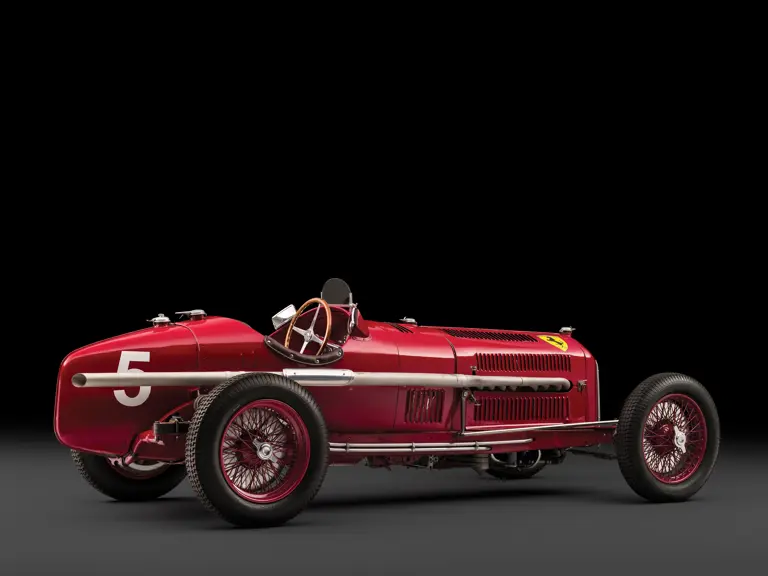
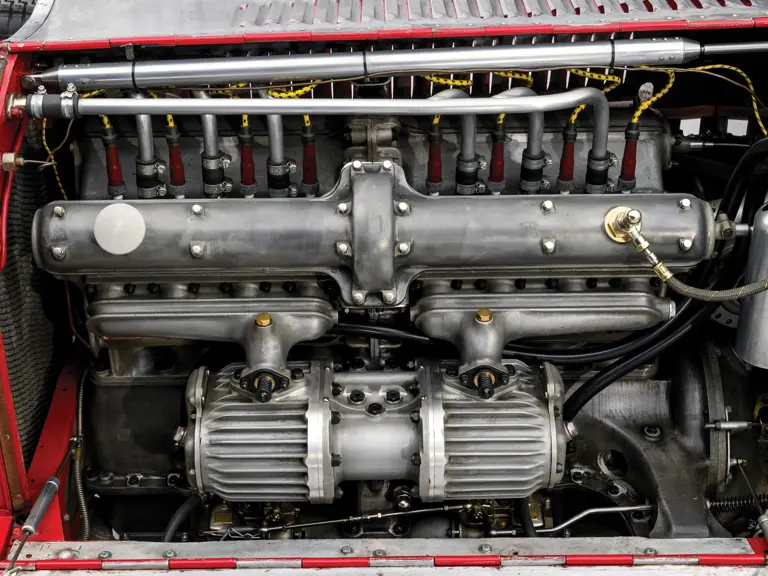

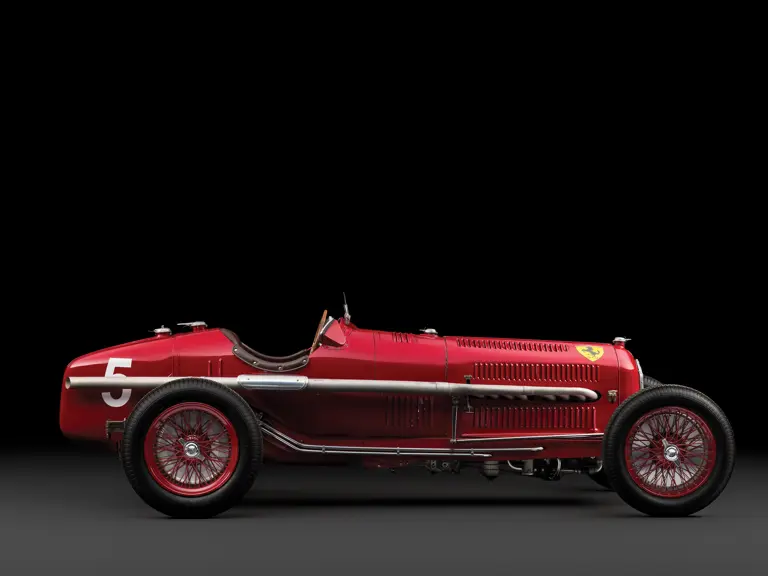
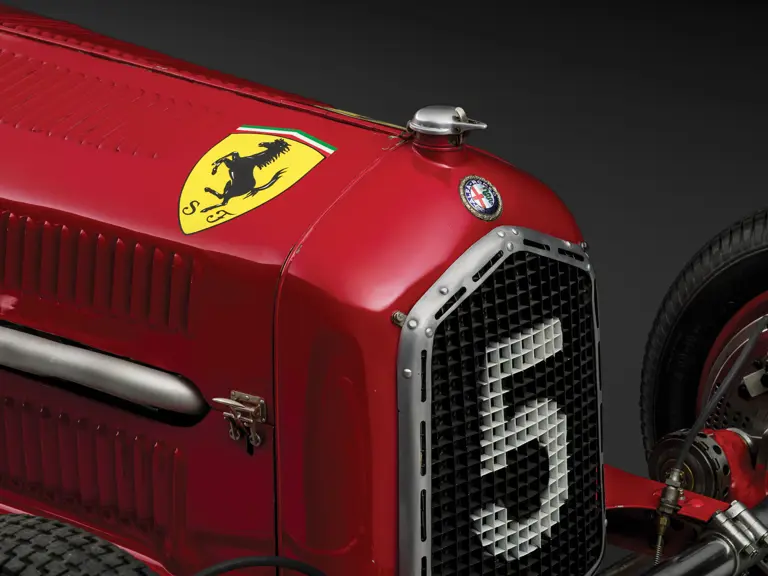
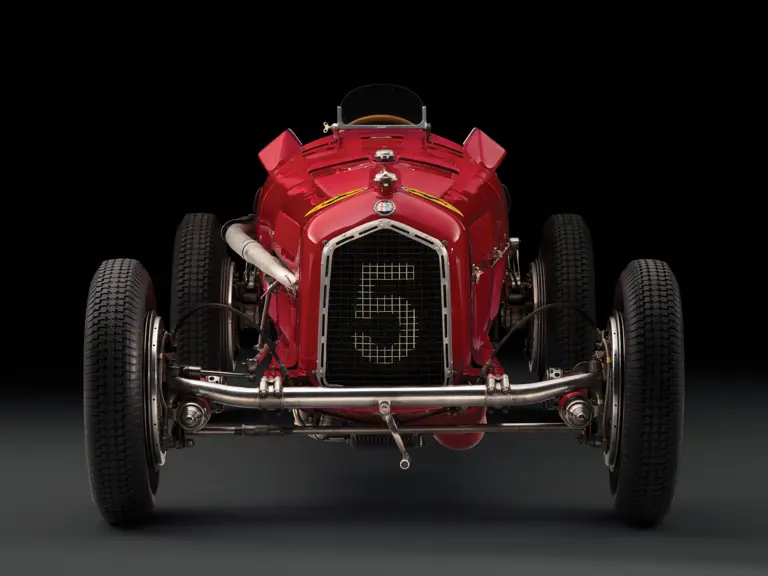
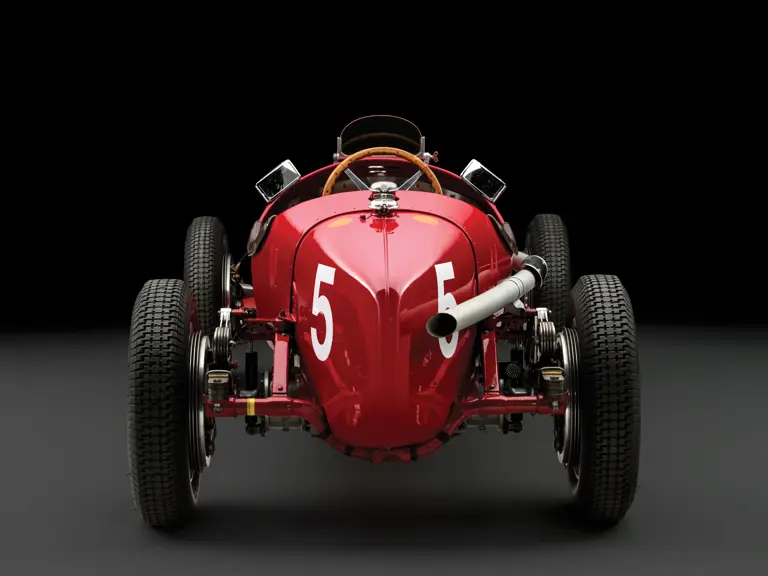
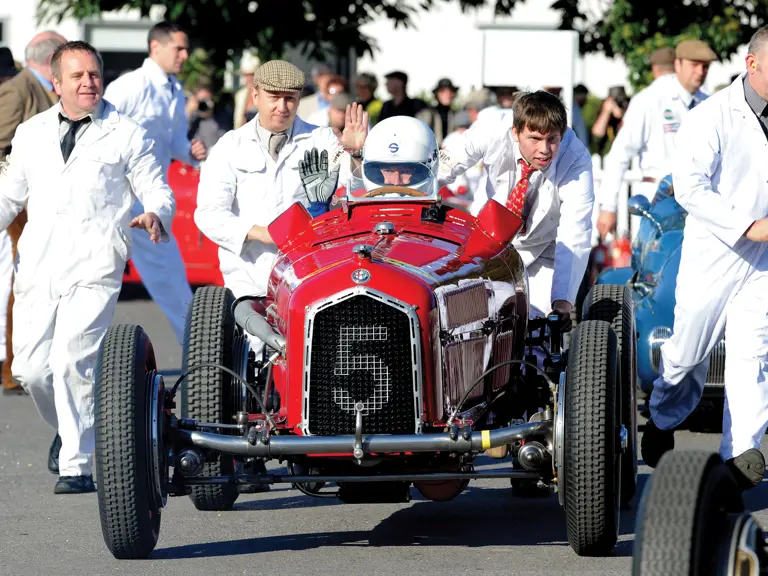
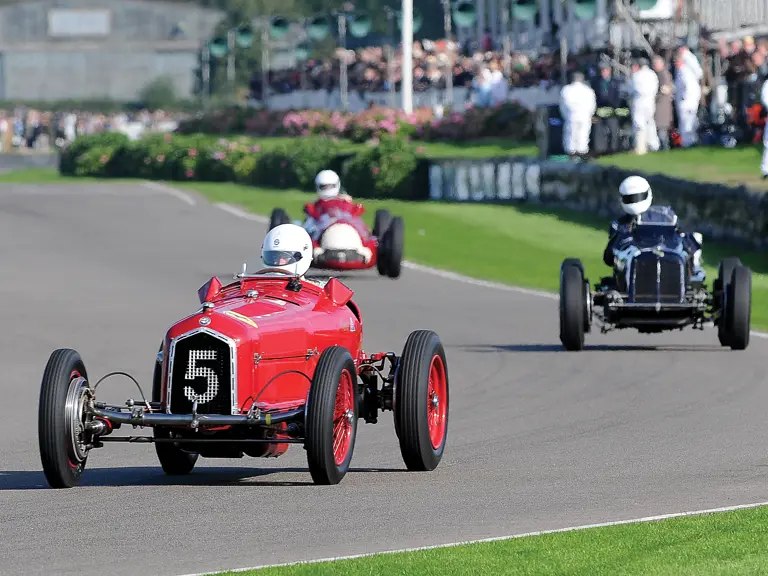
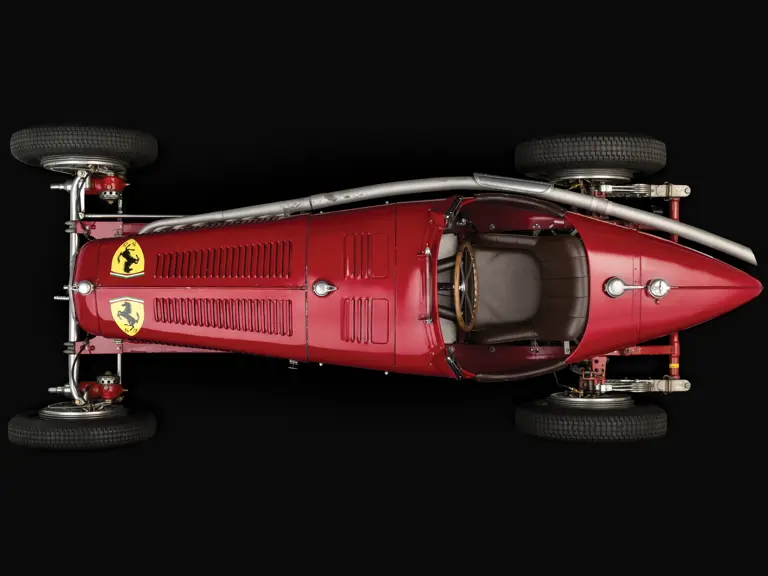

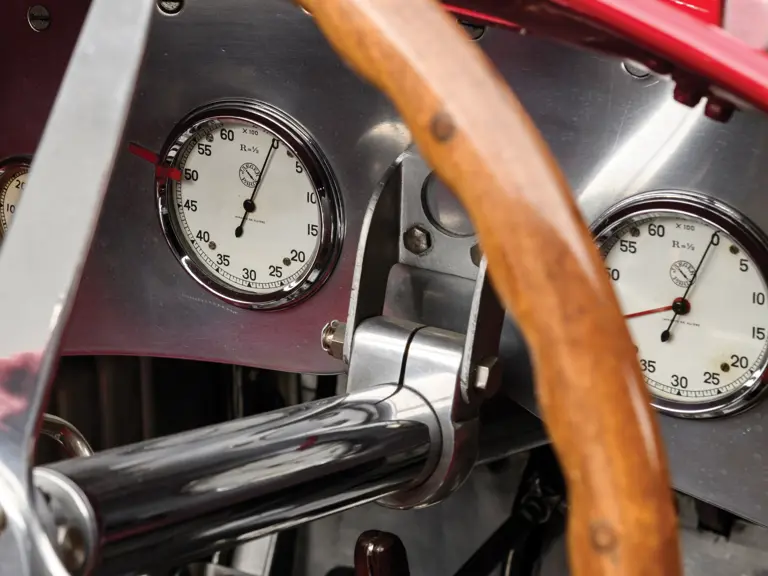
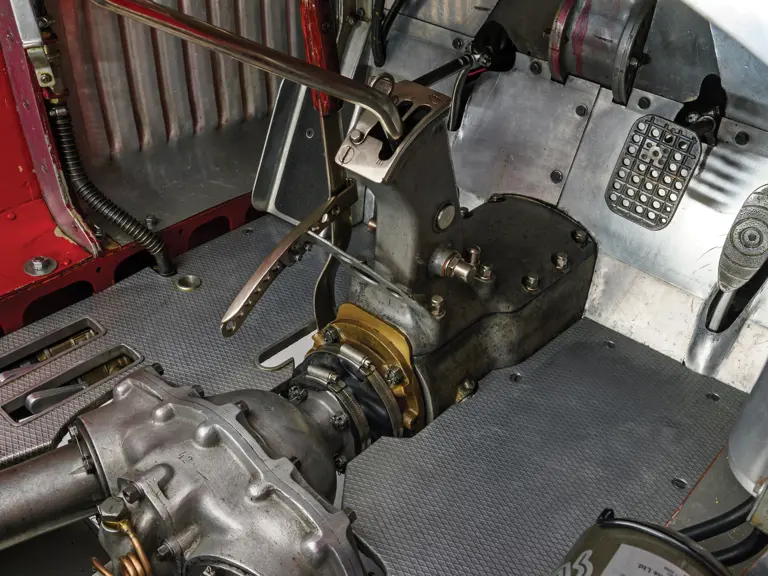
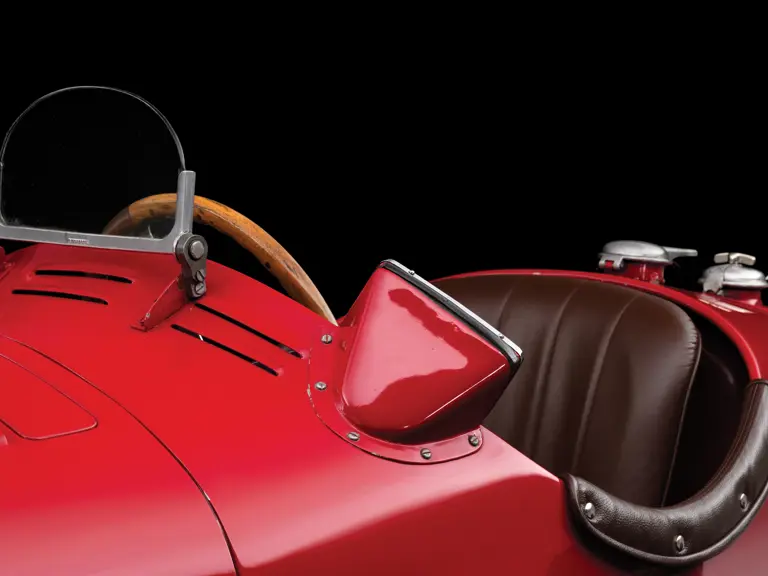
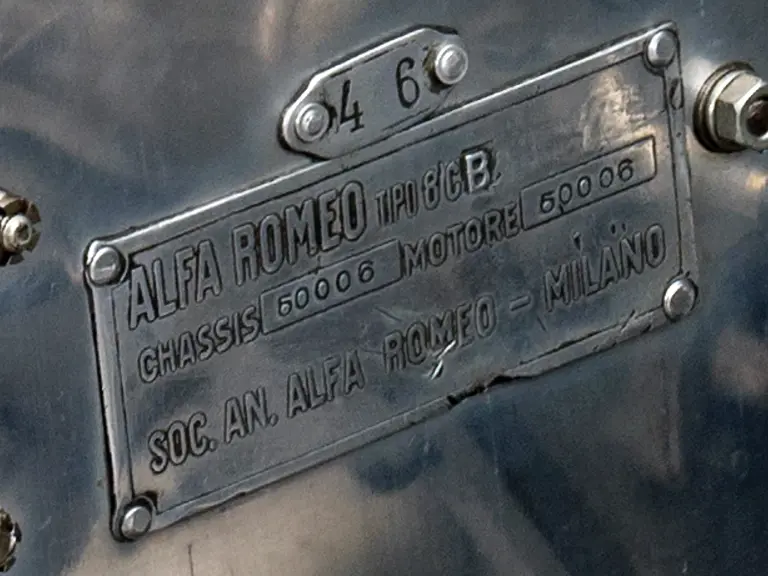
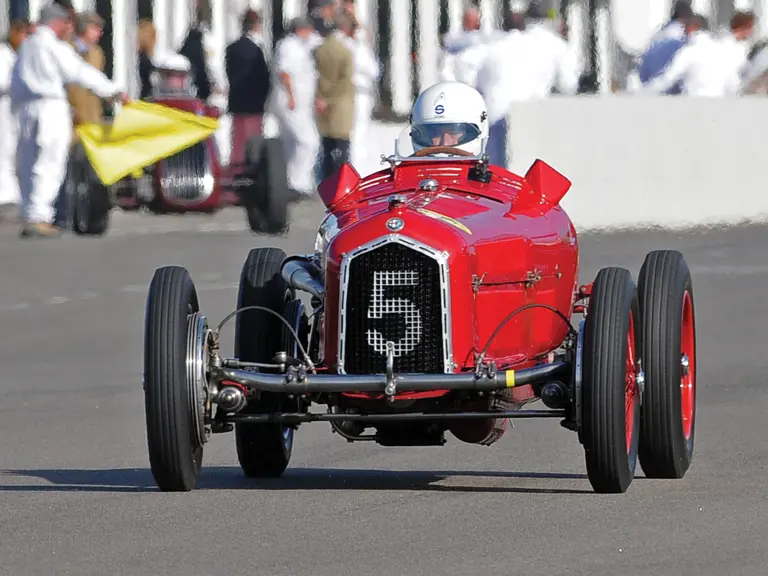
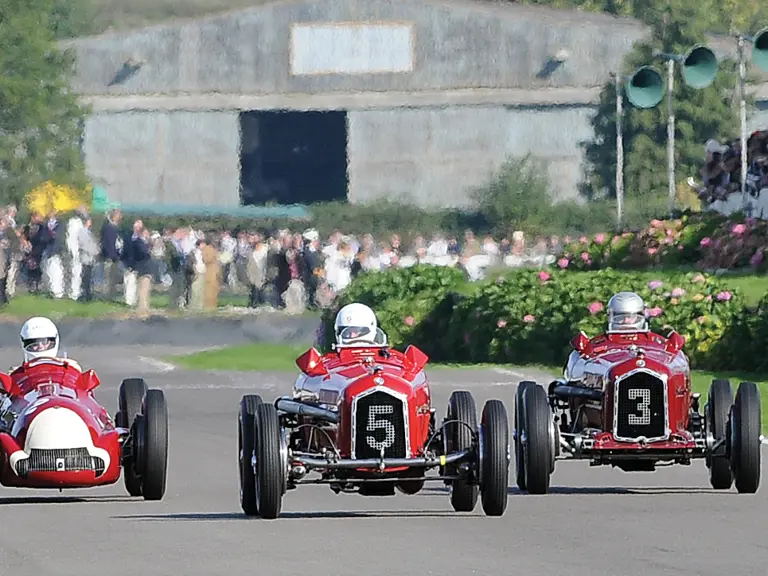
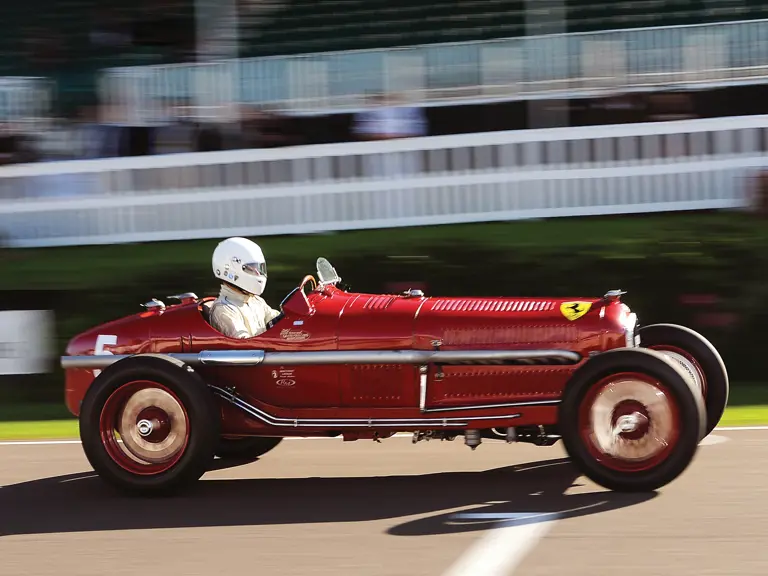
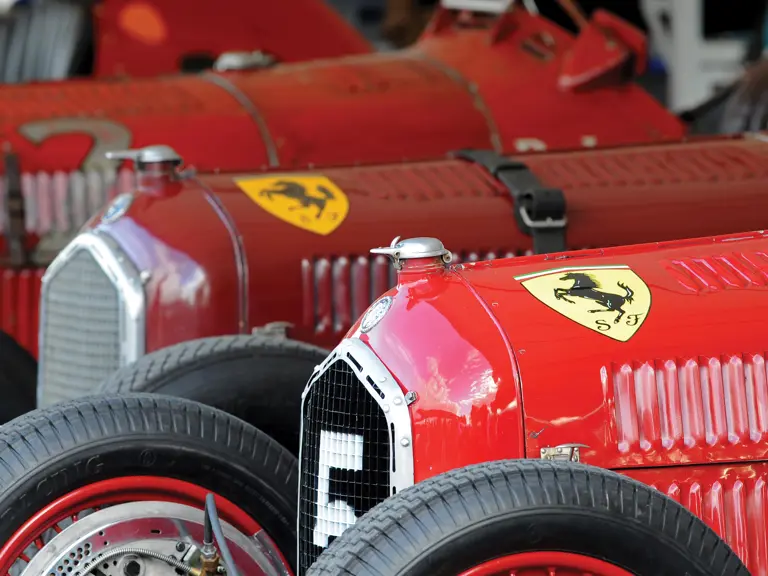
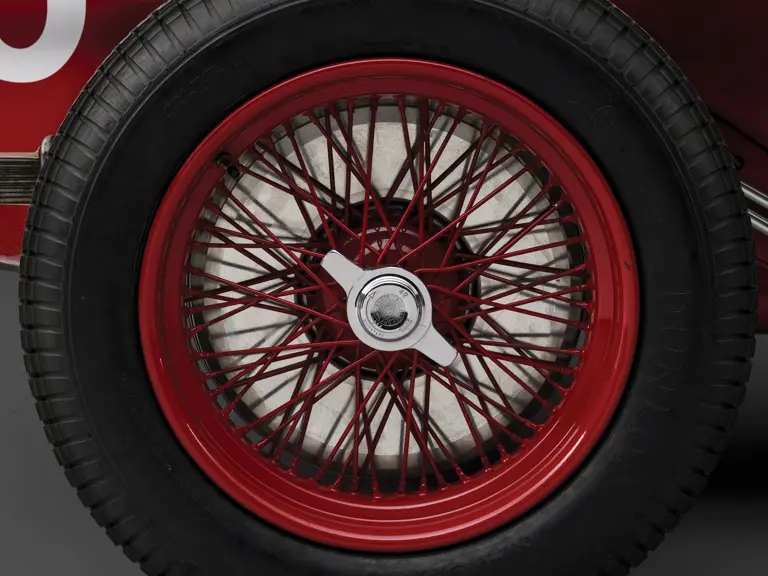
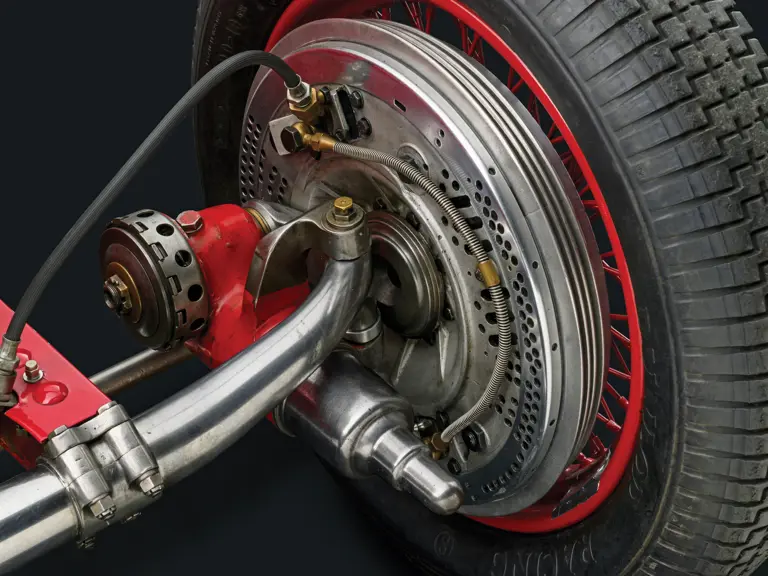
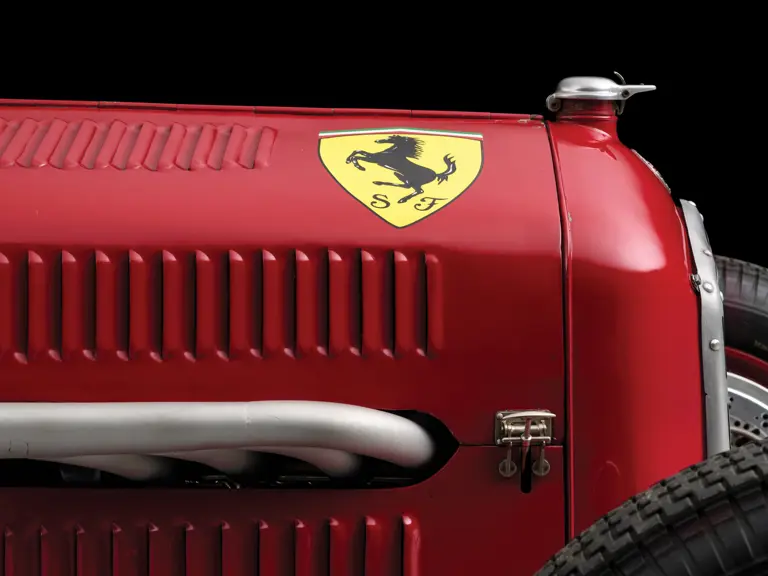
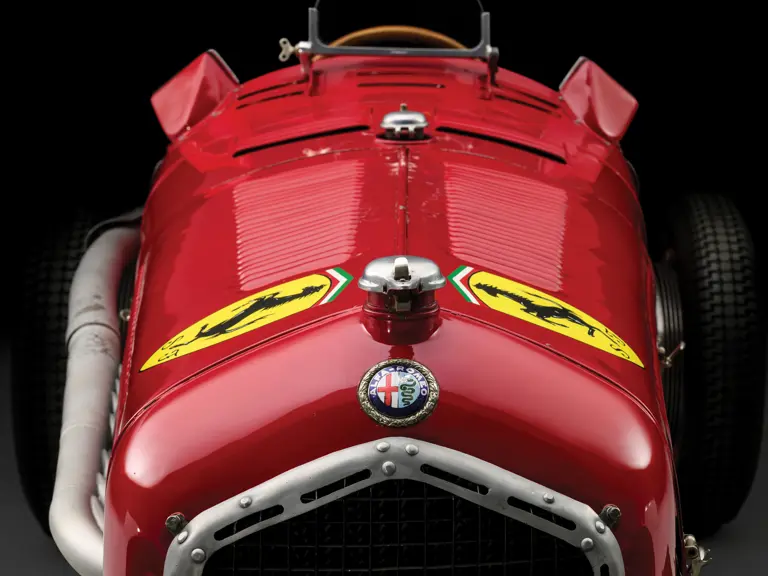
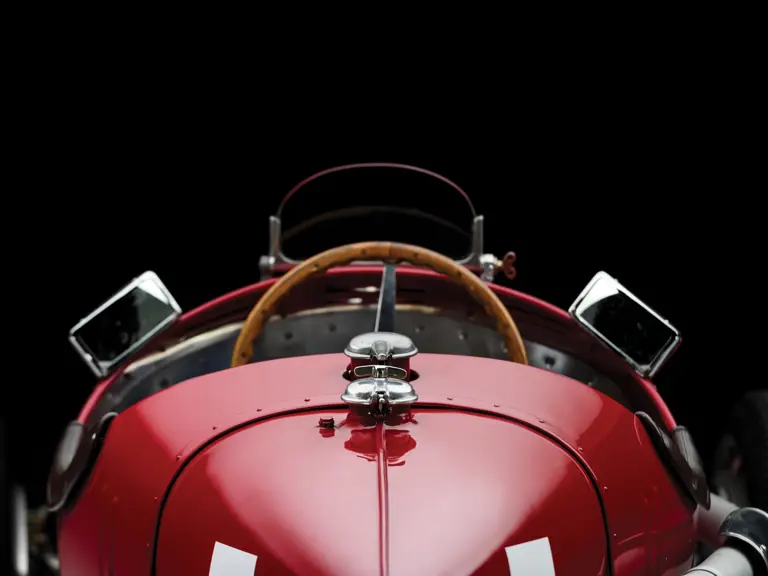

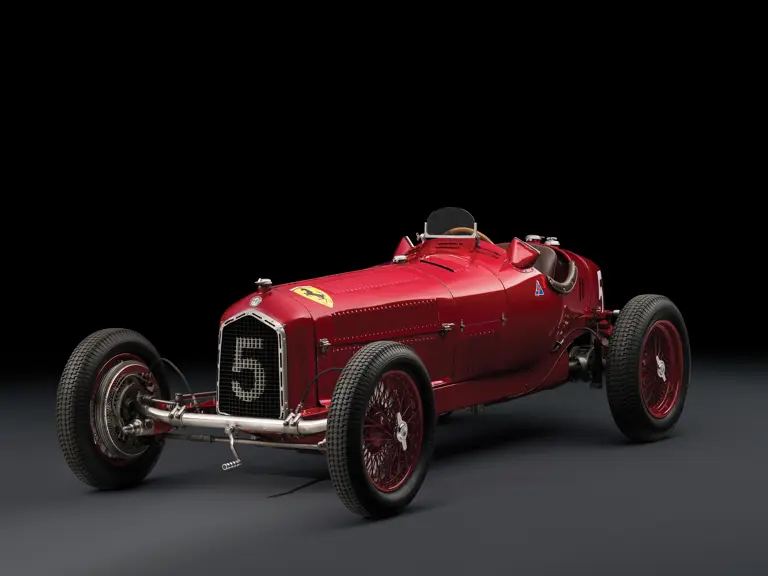
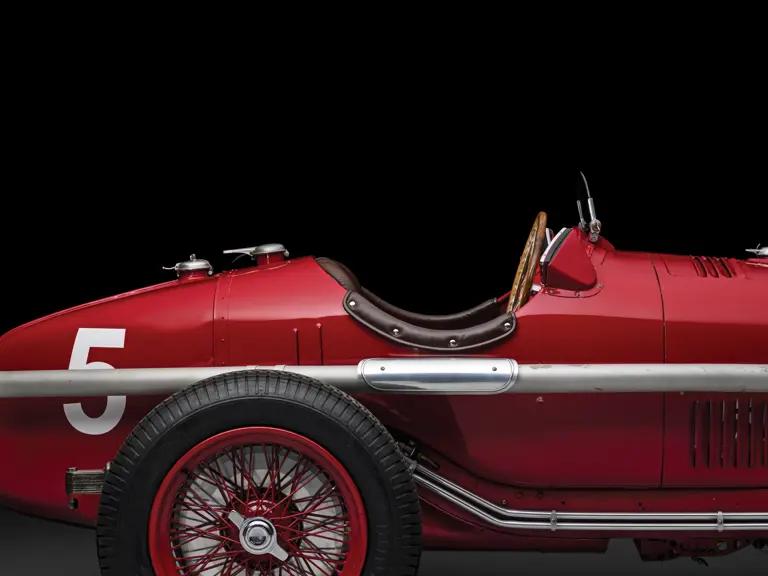
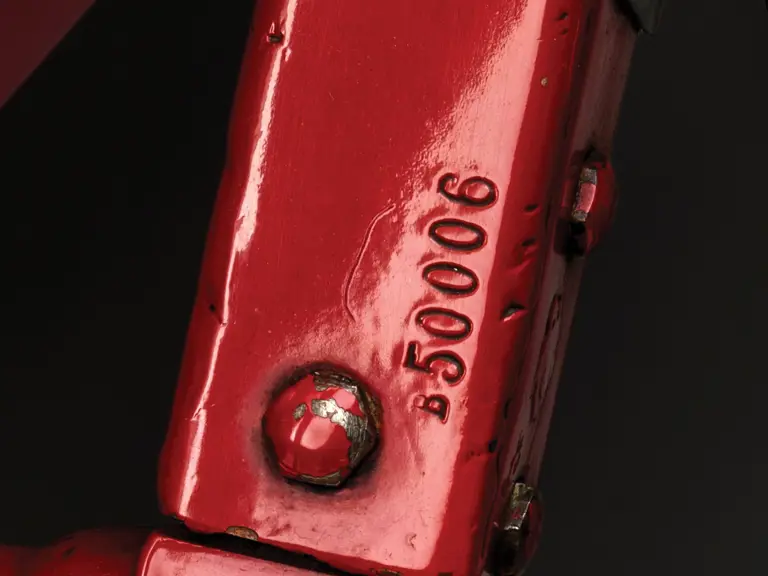
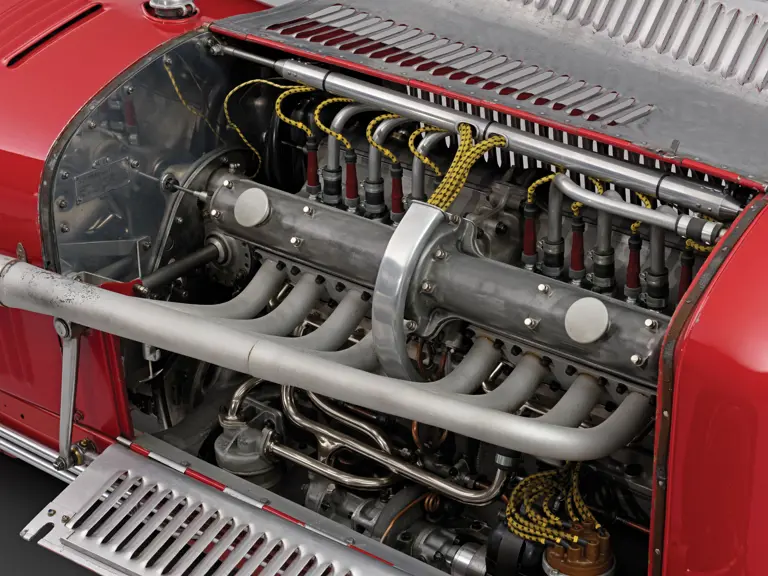
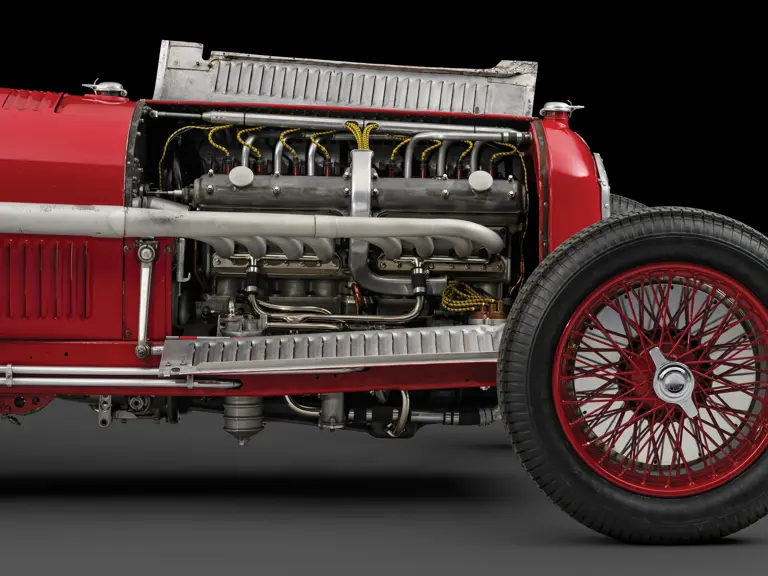
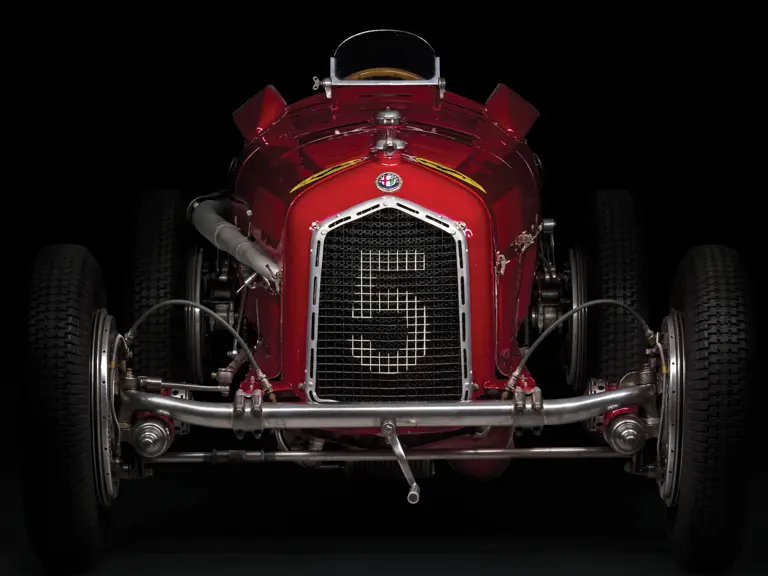
 | Paris, France
| Paris, France
